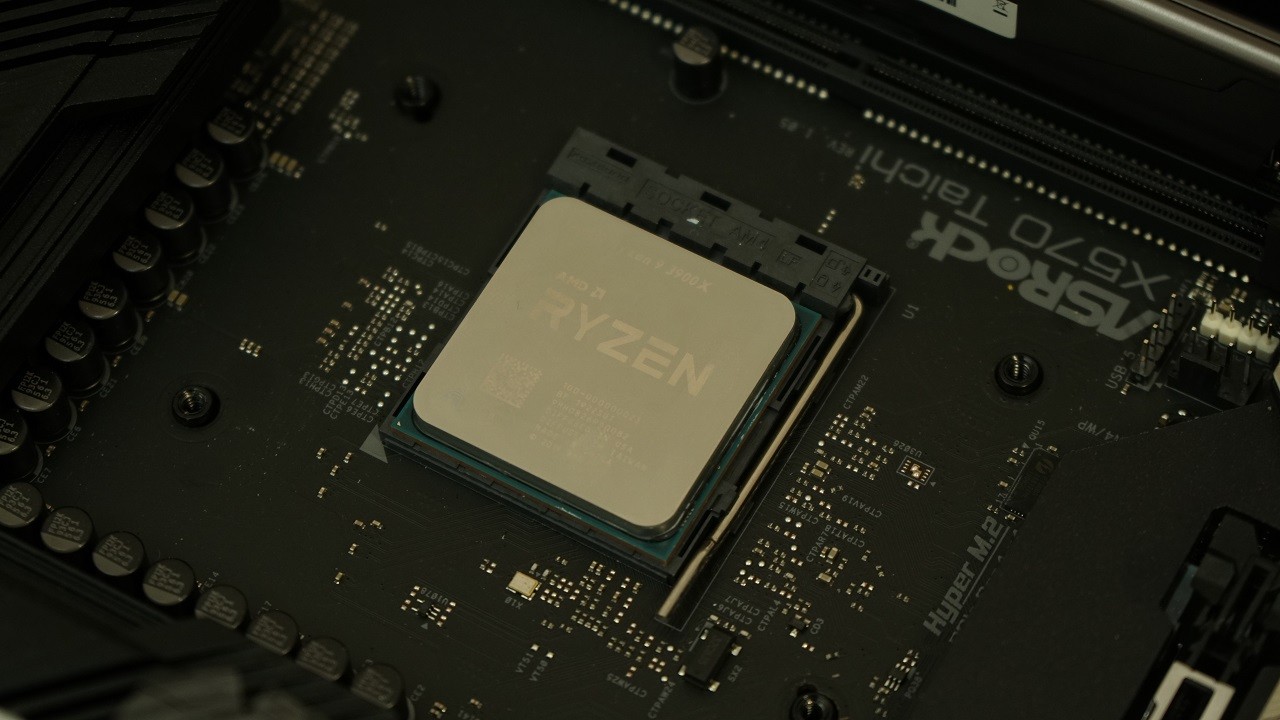We review AMD’s new beast!
After years of trying, AMD finally has a processor that can go head-to-head with Intel’s best and win, at least in several metrics. The new 7nm Ryzen 3900X has been a long time coming, but it’s here, and we’re mighty impressed by it.
Packing 12-cores and 24-threads, it posts excellent numbers in both benchmarks and real-world applications against its main rival, the 8-core and 16-thread Intel Core i9-9900K.
While it’s not the clear winner in the current generation processor wars, it’s a great choice for content creators that need as many cores as possible for their workloads.
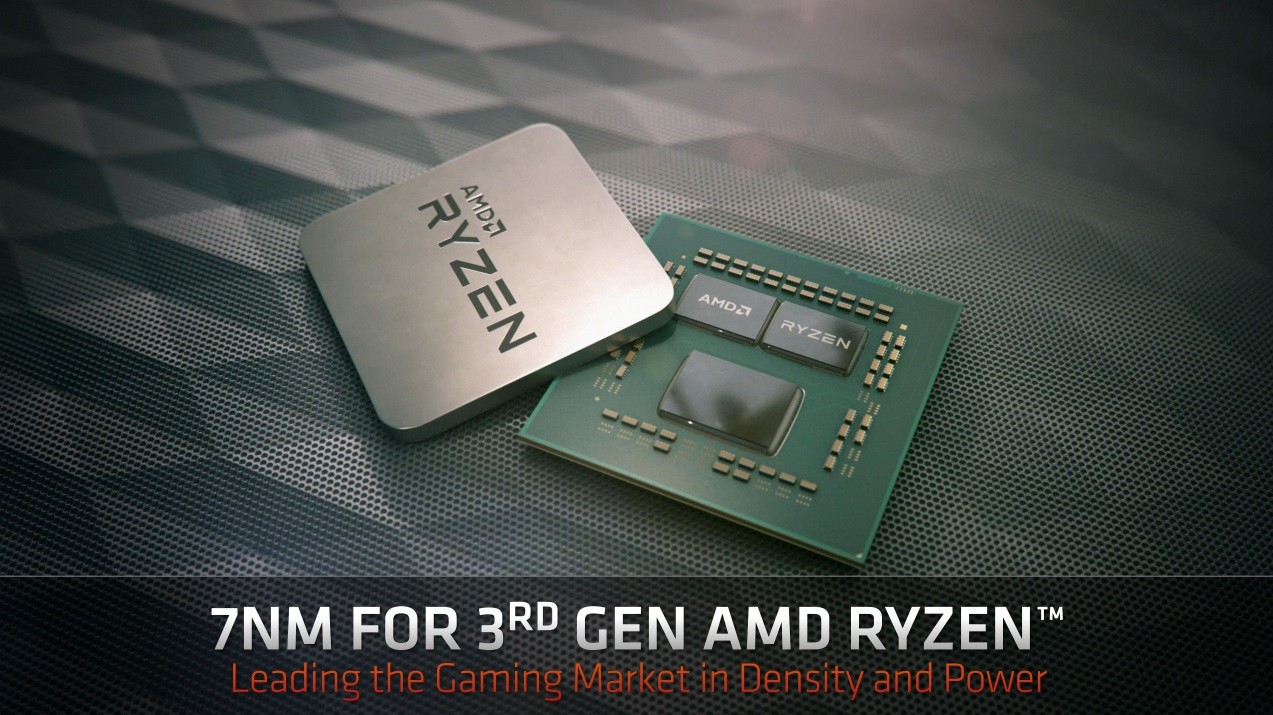
7nm future
AMD’s all about the 7nm life, and just like their new Radeon 5700 and 5700XT GPUs, the Ryzen 3900X is built on the 7nm manufacturing process. It’s the first consumer processor to be built on such a small process as Intel’s comparable Core i9 9900K was built on the bigger 14nm manufacturing node.
Why is the 7nm lithography so important? Well, a smaller die size means smaller transistors, the base component of a processor. Smaller transistors mean you can pack more of them inside a CPU. Smaller transistors are also more power-efficient, which is important for people who don’t want to use all their money paying for their high electric bill.
A smaller die size means there’s more room for other things, like cache size. AMD is lumping both its L3 and L2 cache into what they call GameCache, which comes in at a whopping 70MB total.
The biggest improvement aside from die size this time around is AMD’s increased instructions per clock. IPC is a measure of how many tasks a CPU can conduct per cycle. While higher IPC doesn’t necessarily translate to higher performance on its own, it’s an important link in the chain when it comes to a CPU’s number-crunching capabilities.
Another big feature that comes with AMD’s new breed of chips, specifically the X570 chipset, is the addition of PCIe Gen 4. While AMD’s own Radeon RX5700XT and RX5700 can both utilize PCIe Gen 4, the most notable use of the new standard will be SSDs. AMD actually sent us Corsair’s MP600 NVMe SSD that uses the new standard, so we’ll take a peep at that later on.
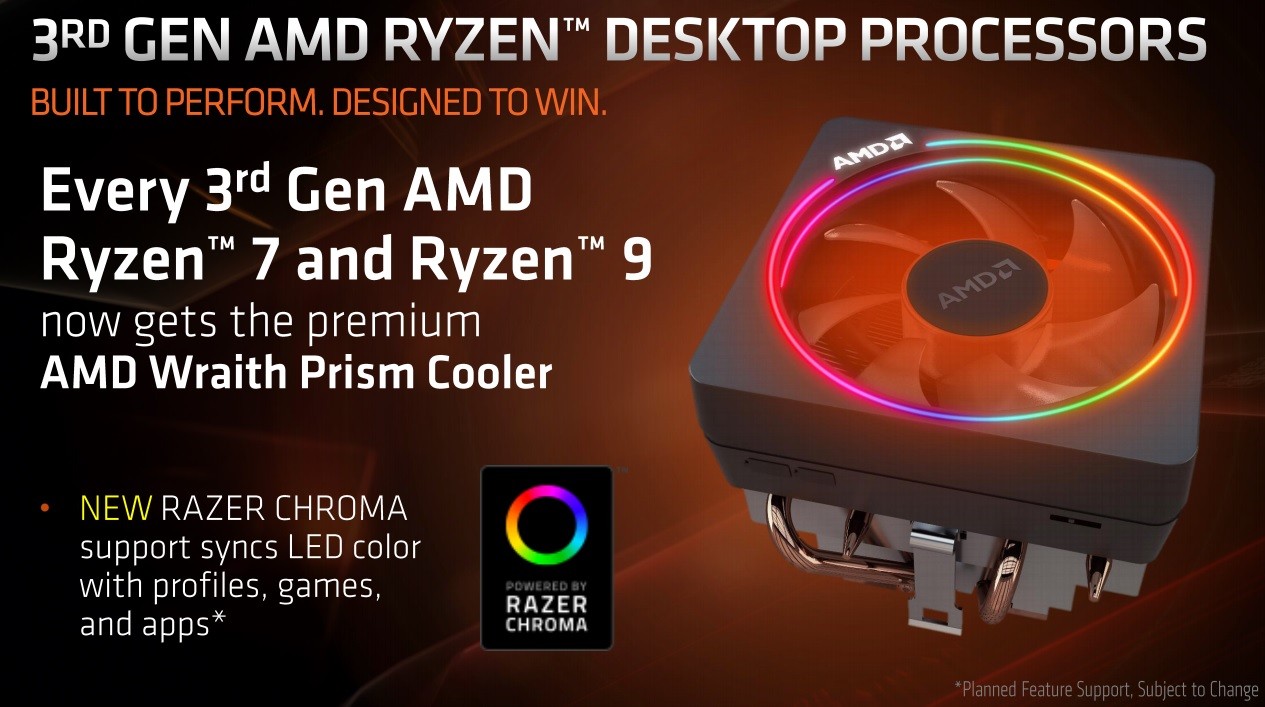
Wraith Cooler freebie is a cool addition
Aside from the processor, once thing you get with every purchase of AMD’s new Ryzen 3900X is a spiffy new Wraith Prism RGB cooler from Cooler Master. It’s a great addition to the processor, offering RGB lighting as well as providing better cooling compared to a stock cooler that Intel throws in with their Core i9 9900K.
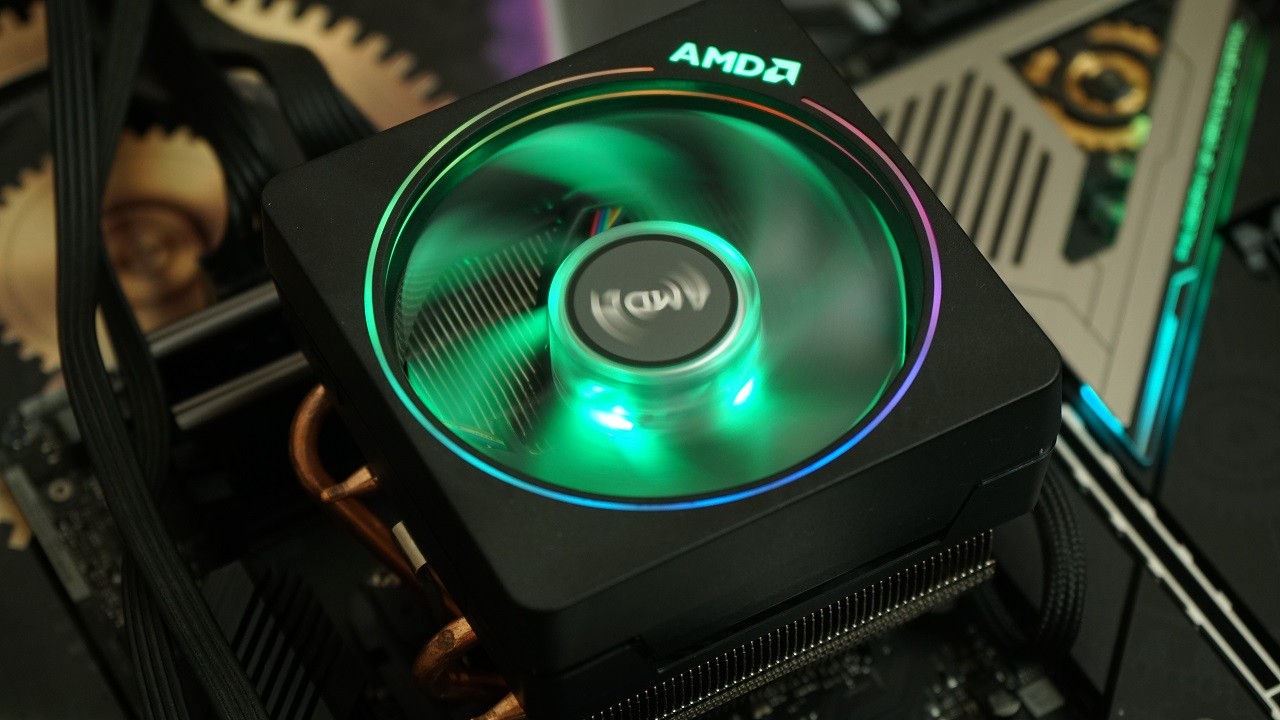
Insane multicore performance, though single-core numbers could use improvement
Let’s get to the meat of it: with 12-cores and 24-threads, the Ryzen 3900X looks like a beast on paper, especially when compared to Intel’s 8-core and 16-thread Core i9 9900K.
We used ASUS’ GL12CX as the test bench for Intel’s Core i9 9900K, though we swapped out the 32GB of RAM for the 16GB T-Force Vulcan Z 3200MHz DDR4 RAM that we also used for the Ryzen test bench.
On the Ryzen side, we used ASROCK’s X570 Taichi motherboard, along with the same T-Force Vulcan Z 3200MHz DDR4 RAM used on the GL12, as well as the PCIe Gen 4-capable Corsair MP600 NVMe SSD that was provided with the test system and the exact same NVIDIA RTX 2080.
Onto the benchmarks:
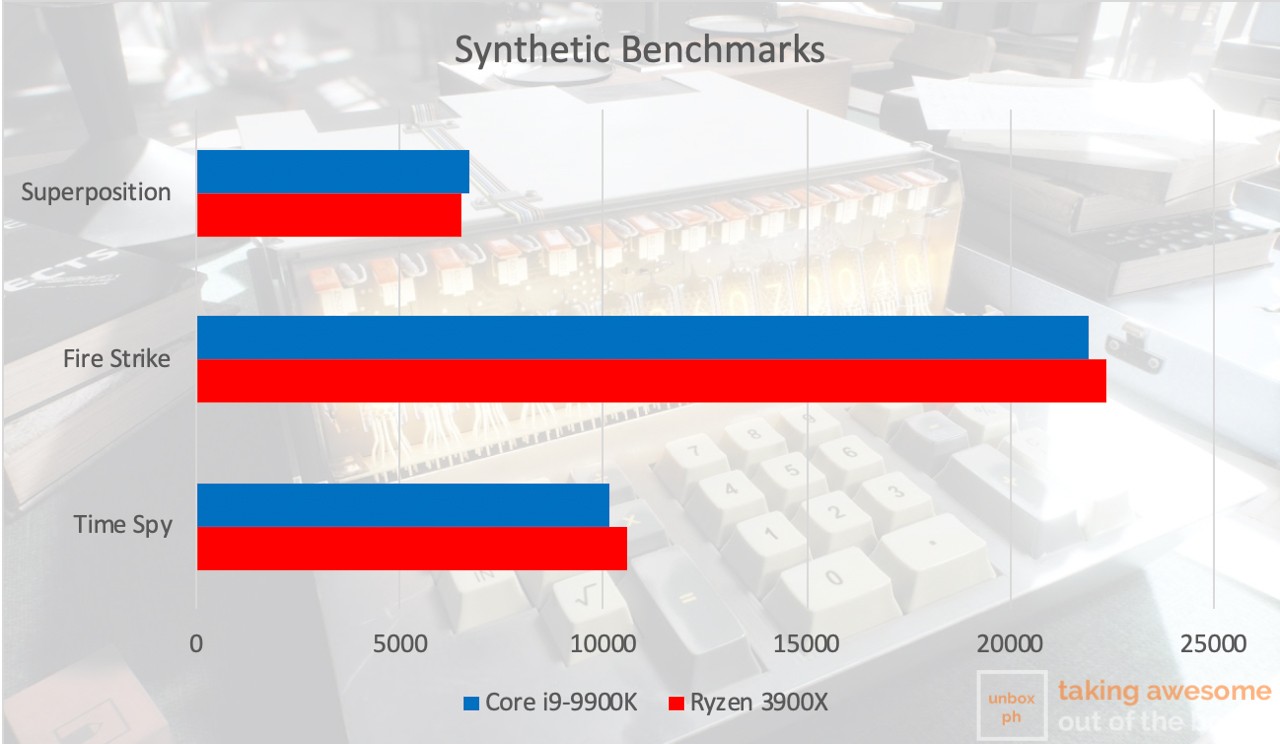
Looking at the numbers, it’s clear that the Ryzen 3900X is a beast when it comes to multi-threaded applications. It easily trounces the Core i9 9900K in Maxxon’s Cinebench R20 and CPUZ’s benchmark when it comes to multi-threaded tests and is generally faster when it comes to content creation that utilizes all cores.
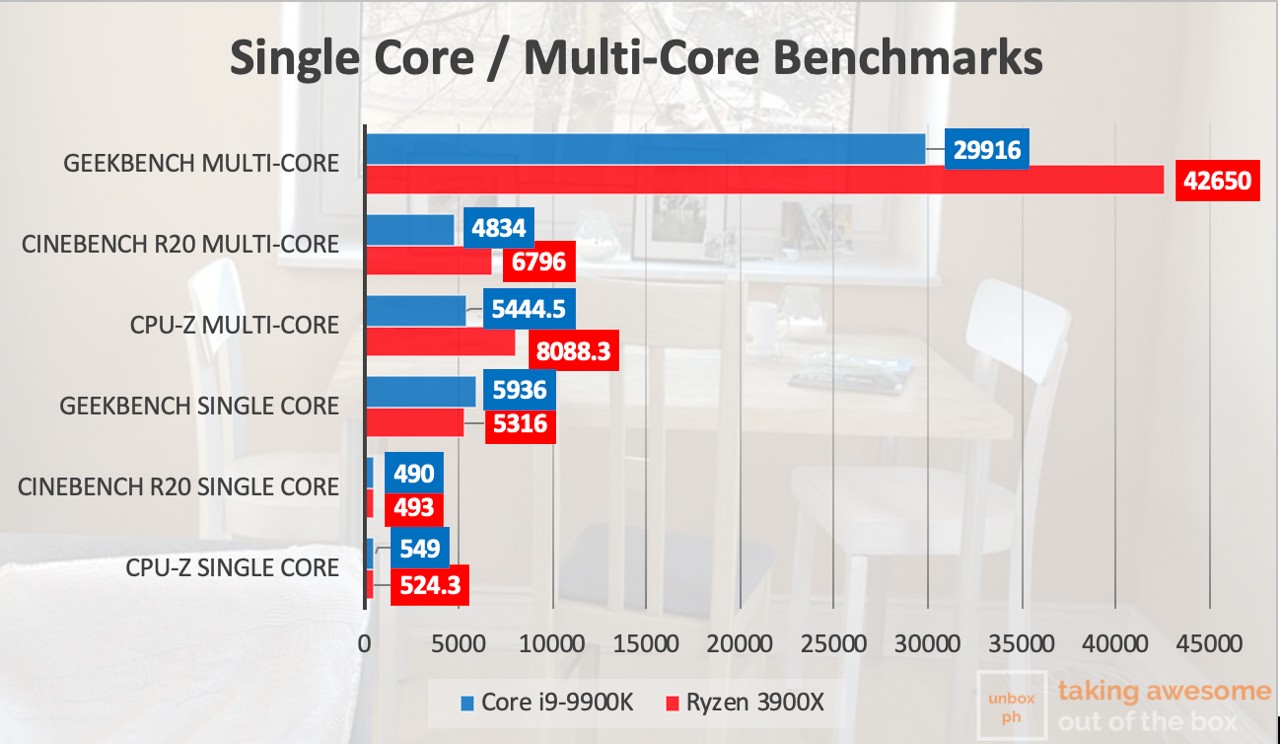
Unfortunately, AMD’s Achilles Heel is still single-core performance, with Intel’s Core i9 9900K taking the lead. One bright spot is Maxxon’s Cinebench R20, which actually saw Ryzen go a few points ahead of Intel’s chip on single-core performance.
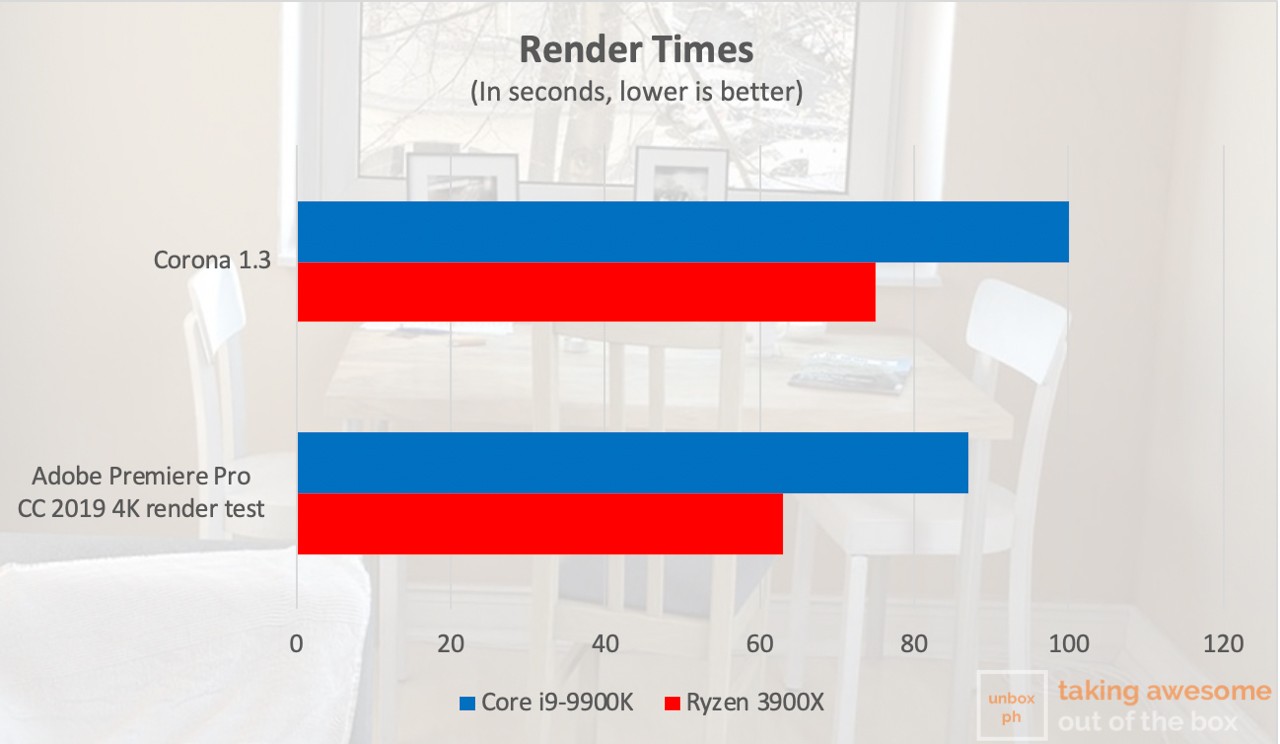
How about real-life use? We used Adobe Premiere CC Pro 2019 to render a 4K video lasting around two minutes, and the Ryzen 3900X managed to finish encoding faster than the Core i9 9900K.
Even in the Corona benchmark, AMD’s Ryzen 3900X continues to dominate, posting a faster time overall compared to Intel’s Core i9 9900K.
You’d think that this performance meant that the Ryzen 3900X came out on top when it comes to game performance against Intel’s Core i9 9900K, but that’s not the case. Let’s take a look at the numbers:
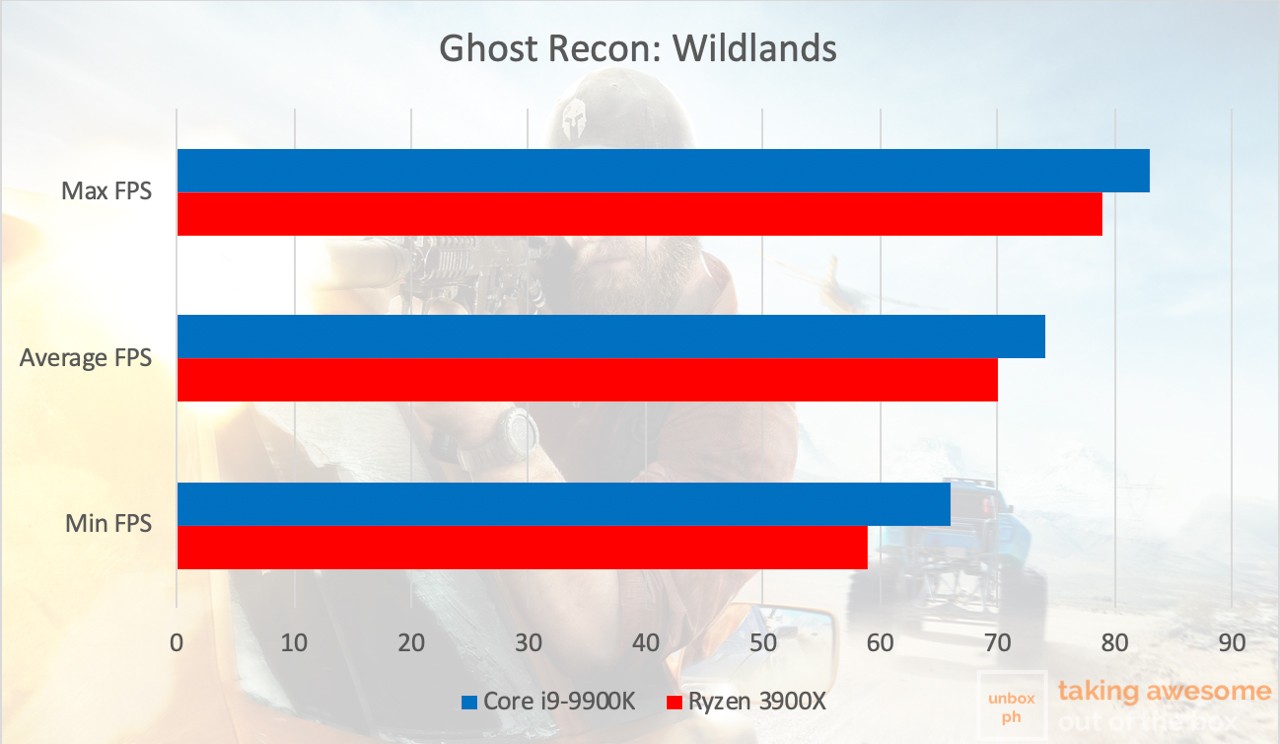
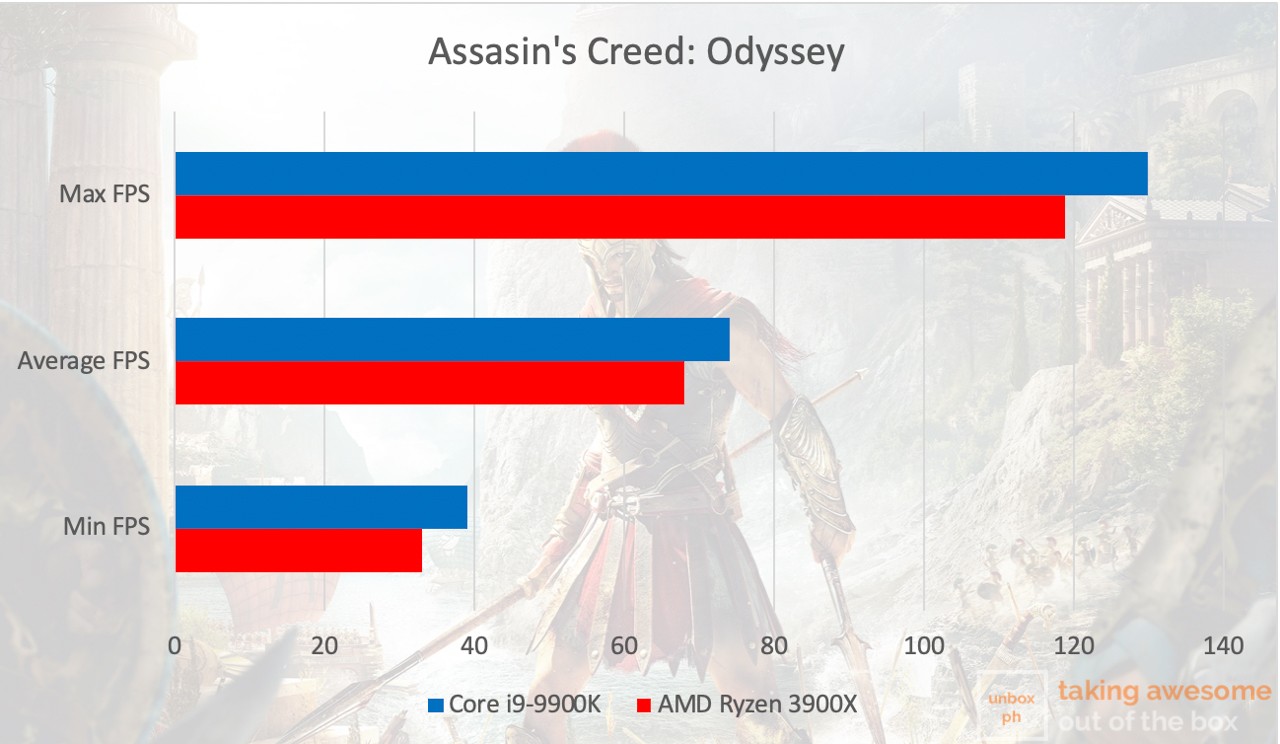
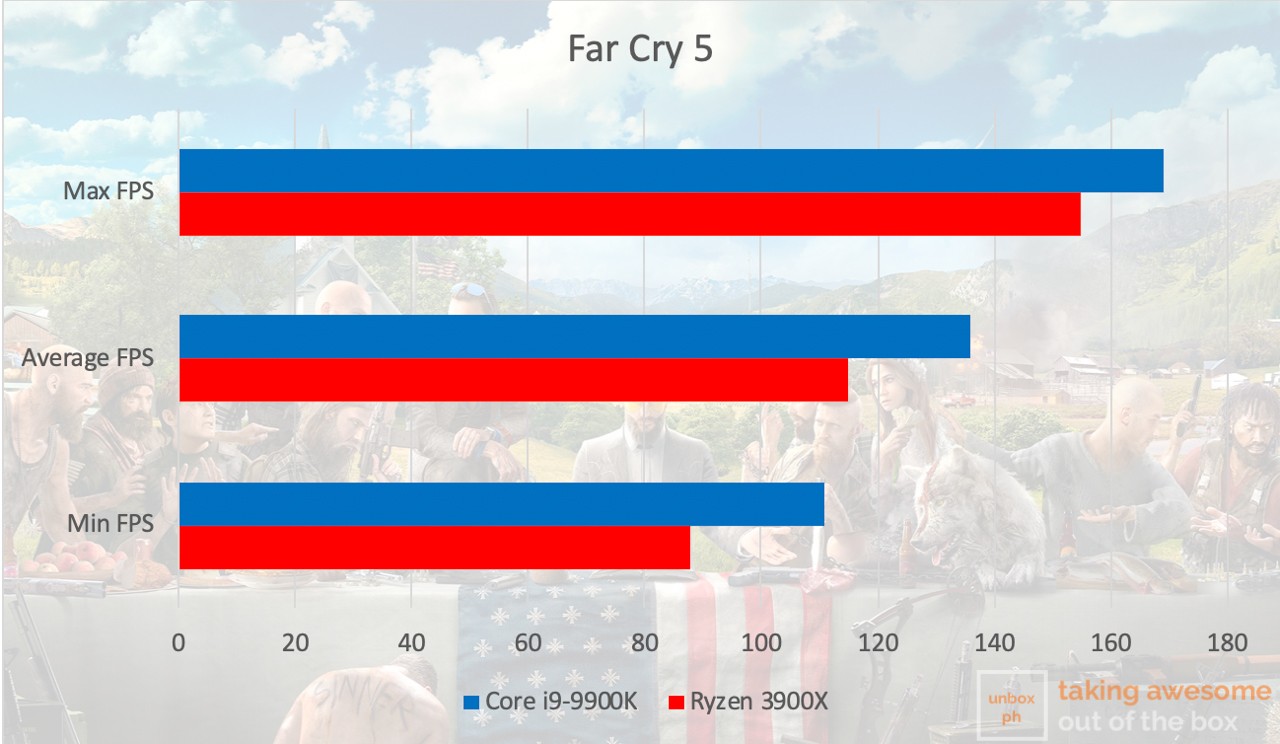
Intel’s Core i9 9900K consistently come out on top VS AMD’s Ryzen 3900X. Why? Simple: many games still rely on single-core performance in games, thus the difference. That doesn’t mean that AMD’s efforts were in vain though, far from it: previous generation Ryzen chips had worse performance VS Intel’s offerings in games, often trailing far behind in overall FPS. It’s amazing what AMD has done in such a short time, and while Intel wins over AMD’s offering in gaming, the margins are pretty slim overall.
Probably the only negative we see here is temps: we used the included cooler and we saw temperatures rising up to 82 degrees Celcius with it. Take note that we were in an un-airconditioned room, but that’s still a little high. Prospective Ryzen 3900X buyers might want to invest in a water cooler to keep temps down.
If you were wondering what speeds that PCI-e 4.0 delivers and how it affects SSD performance, here, check out the read and write speeds of that particular SSD compared to Western Digital’s Black:
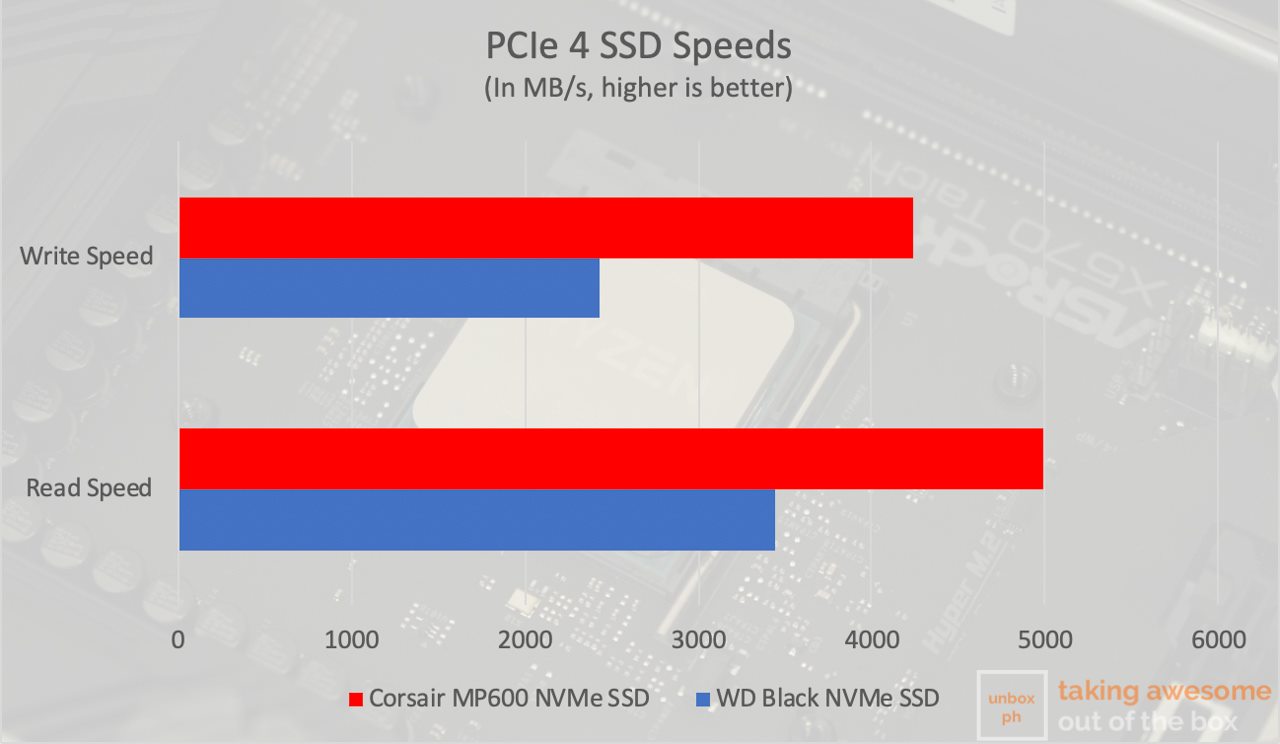
Verdict: A solid choice for content creators, but still a toss-up for gamers
It’s amazing what AMD has done in such a short time with Ryzen. We never thought we’d see the day that AMD would be back giving Intel a headache. It’s like Athlon all over again.
The question now is this: should you pick AMD’s Ryzen 3900X over Intel’s Core i9 9900K when building a new rig? Well, it depends on what you’re doing. If you’re a content creator that works a lot with video or stream quite a bit, then yes, AMD’s Ryzen 3900X is the chip for you. If you’re building a PC purely for gaming, then Intel’s offering might be more in line what you want to do, but as games rely on multi-threading even more, that might not be the case in the near future.
Moving right along to pricing, Intel’s Core i9 9900K is priced slightly lower compared to AMD’s Ryzen 3900X. Consulting PC Hub’s published prices, an Intel Core i9 9900K is priced at around Php 25,999 cash price, while AMD’s 3900X is priced higher, at 28,850.
Purchase of AMD’s new chip isn’t straightforward too – you’ll have to buy an X570 board along with that or the price hikes up 3K more.


